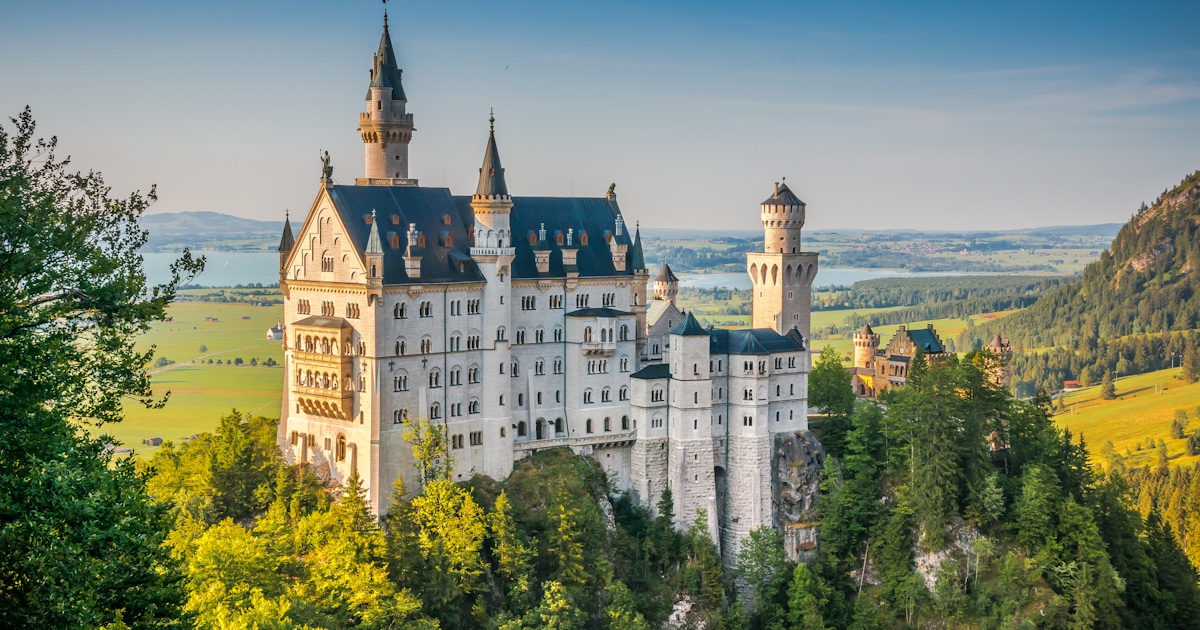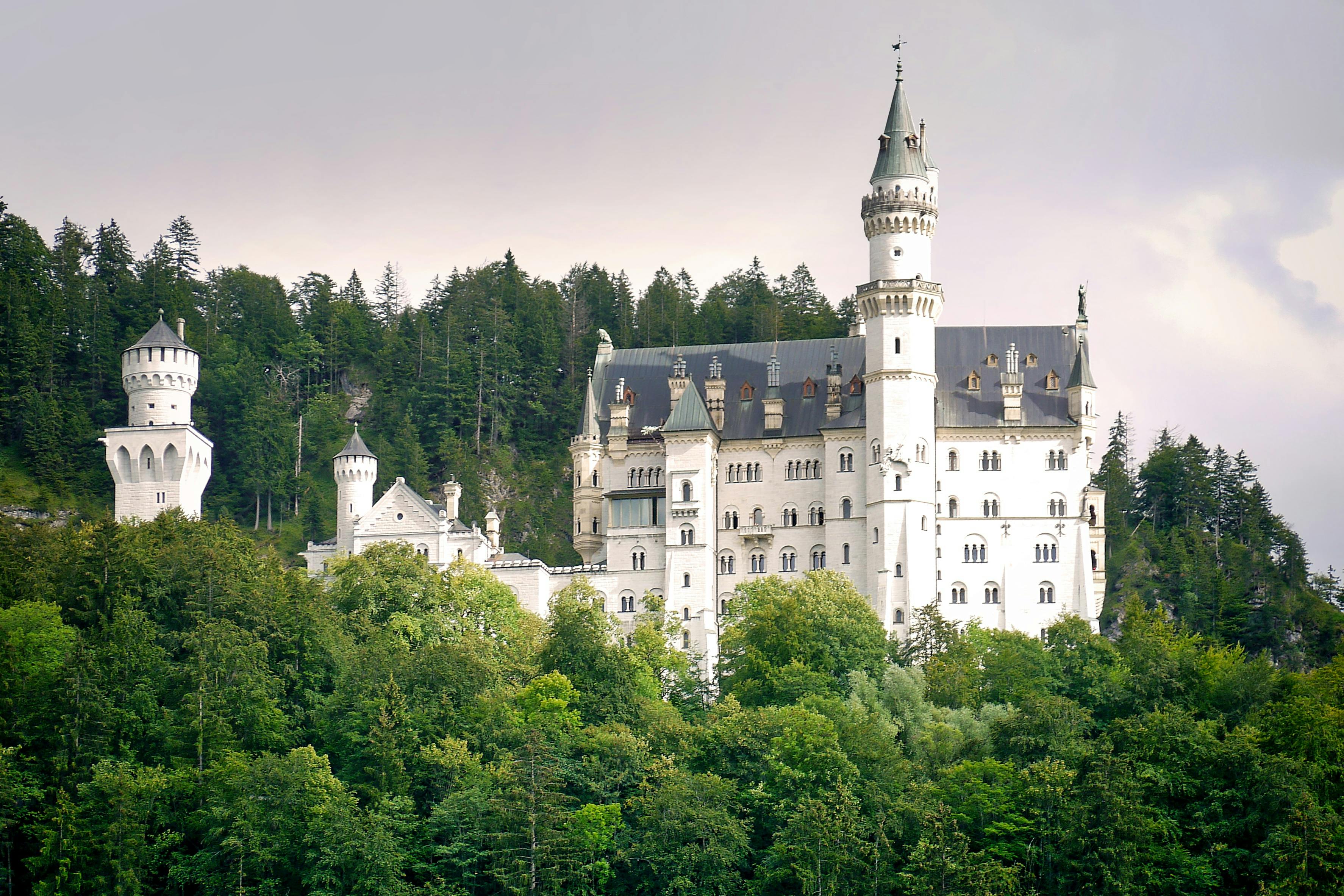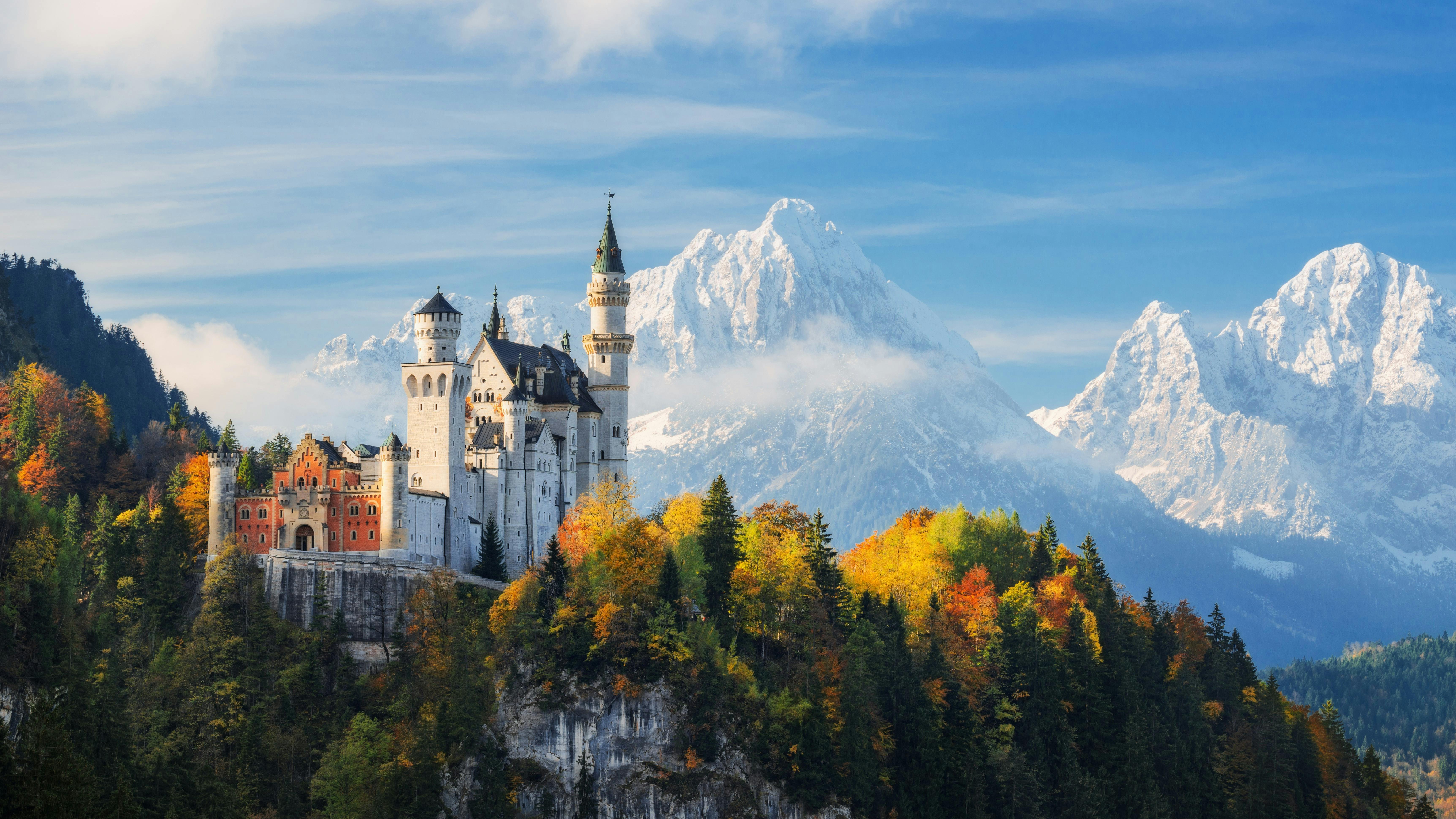Neuschwanstein Castle is a 19th-century palace located in Bavaria, Germany, that was commissioned by King Ludwig II of Bavaria. Construction of the castle began in 1869 and was completed in 1886, although Ludwig only lived in the castle for a few months before his untimely death.
The castle was designed by Christian Jank, a stage designer who had no previous experience in architecture. The castle was built in the Gothic Revival style and was intended to be a personal refuge for Ludwig, who was known for his reclusive nature. The castle was also meant to be a tribute to Richard Wagner, Ludwig’s favorite composer, and many of the rooms in the castle are decorated with scenes from Wagner’s operas.
The castle was built on a hill overlooking the village of Hohenschwangau and the Alpsee lake. It was constructed using local materials, such as limestone and sandstone, and was decorated with numerous murals and frescoes. The castle was also equipped with the latest technological advancements of the time, including central heating, running water, and flush toilets.
After Ludwig’s death, Neuschwanstein Castle became a popular tourist destination, attracting millions of visitors every year. The castle has also been used as a location for several films, including “Chitty Chitty Bang Bang” and “The Great Escape.”
Today, Neuschwanstein Castle remains one of the most popular tourist attractions in Germany and is regarded as one of the most iconic examples of 19th-century Romantic architecture. It is also considered one of the most photographed buildings in the world.











